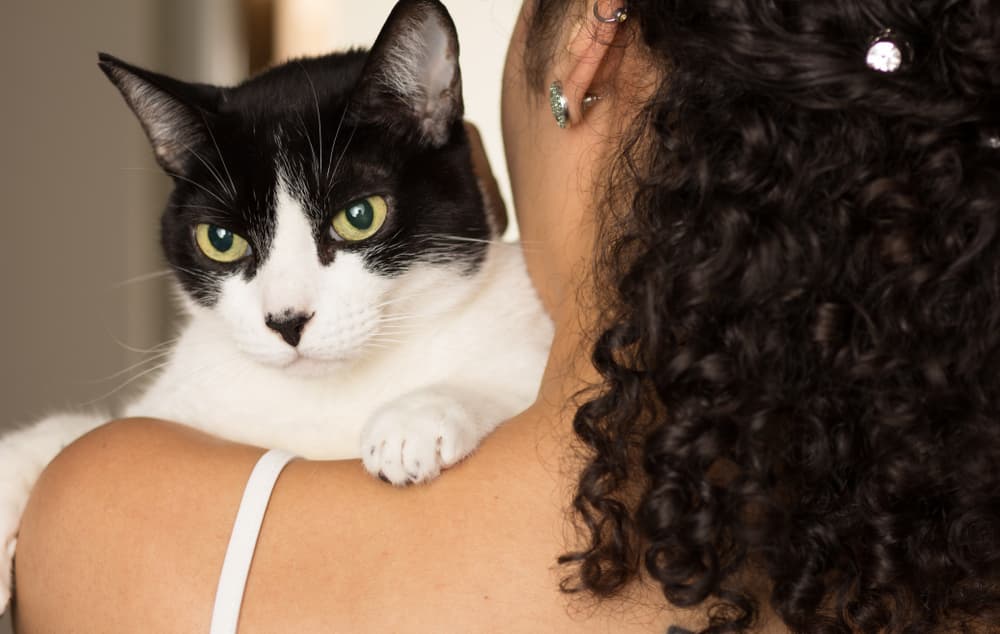Cat Trilling: Why They Do It and What It Means

Similar to humans, cats communicate amongst each other and with other species in a variety of ways including body language, tail language, and different types of vocalizations.
Cats also communicate with scents such as rubbing their cheek onto housemates, objects, or pet parents, or even by urine spraying.
The vocal forms of communication in cats are varied. Subtle differences between individual meows cannot be distinguished by humans but can be by other cats as well as other species. A single cat may have dozens of different meows with different meanings. Cat trilling, on the other hand, is luckily more straightforward.
What is Cat Trilling?

Cat trilling is a vocal form of communication that cats use to “talk” to other cats, to humans, and even to other animals (particularly within their household). It is a high-pitched, repetitive noise that comes out in short bursts. Trilling is also known as chirping. Cat trilling occurs with the mouth closed, not open like many other forms of vocalizing.
Trilling is a natural social behavior with other cats, and kittens begin learning key social behaviors between 2 and 7 weeks of age. Kittens that were housed without other adult cats after the age of 6 weeks may never learn trilling.
Trilling vs. Other Cat Sounds
Trilling differs from other recognizable cat sounds like purring, meowing, yowling, and hissing. In order to better understand the differences, it’s helpful to know the three categories for cat vocalizations. They are as follows:
Closed mouth. These vocalizations occur with the mouth closed and include trilling and purring. Purring is a constant noise, almost like a vibration. It can be a variety of pitches depending on the cat. Purring is associated with both positive associations such as pleasing attention from a pet parent, or extreme pain. Purring has been theorized to perhaps be a way for cats to seek care, although it is much more frequently tied to positive things. Unlike purring, which is a continual noise, trilling is characterized by short, repetitive, high-pitched noises.
Open mouth then closed. These vocalizations are meows. The cat’s mouth is open for the meow but ends the noise by closing the mouth. Meows are similar in sound to how the word is pronounced—they can be long and drawn out or short. Meows are very nuanced. Each cat may have dozens of different meows with different meanings. Pet parents may learn some of their own cat’s individual meows. Mating calls from both females and males are also included in this category.
Open mouth. These are all fear-based or aggressive vocalizations made with the mouth open. Hissing, growling, yowling, snarling, and spitting occur with the mouth open. Hissing is a constant muted noise that is typically very short. Growling is typically a low-pitched, constant noise of varying length. Yowling is a very dramatic, sharp vocalization that almost sounds like a very loud meow but is more like a “raow”. Spitting is a very quick vocalization, only tenths of a second, that sounds like a rush of air and a person trying to pronounce the letter “F.” Spitting is often accompanied by some flying saliva, as the name would suggest.
Why Do Cats Trill?

Cats trill when they see or approach a familiar and well-liked person, cat, or other animal. Studies show it is specifically associated with positive and familiar situations (1). A person they know may be offering treats or bringing out a favorite toy, but the reason for the trill is the specific person, not the activity itself.
Keep in mind that just because a cat doesn’t trill does not mean a cat is unhappy or doesn’t like their pet parents. Some cats trill much more than others because they are generally more social cats.
Hormones may also influence this type of vocalization, as female cats that are in heat (trying to find a mate) tend to trill frequently.
Cat Breeds That Trill
There are no cat breeds known for trilling more frequently than others. Cat trilling is a communication common to all cats, and different individual cats will trill more than others.
Cat Trilling All The Time: Should You Worry?

There should be no concern with a cat that trills frequently. Some cats are just more social than others!
Trilling is a common, natural, and healthy form of communication from your cat. If your cat is female and intact (not spayed) she is likely to trill more frequently due to her hormones causing her to wish for a mate.
On rare occasions, a female cat that was previously spayed and months later is heard to be trilling frequently may be experiencing symptoms of being in heat. Discuss any other symptoms of being in heat with your veterinarian, including vocalizing in general much more frequently and demonstrating a stance with her tail held high, front half of the body low, and back half of the body held up with the back feet moving slightly.
These cats have what we call an ovarian remnant. Rarely a surgeon will mistakenly leave a very small piece of the ovary (organ that produces hormones in females) and it will continue to create hormones leading to heat cycles, even if the female cannot possibly become pregnant due to the lack of a uterus after spay.









